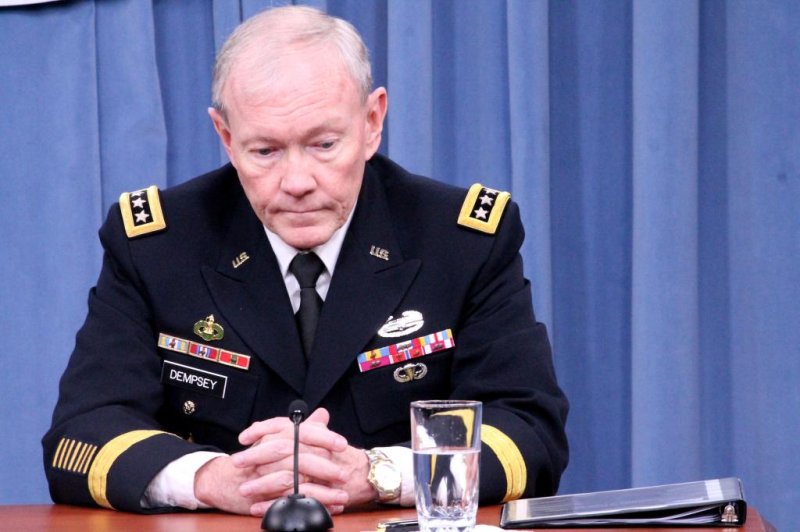1 of 3 | General Martin Dempsey, Chairman of the Joint Chiefs of Staff. Photo-Jennifer Leigh-Oprihory
WASHINGTON, April 10 -- The Department of Defense proposed a $526.6 billion budget for fiscal 2014 Wednesday that includes capping military pay increases at 1 percent, closing bases and canceling a number of weapons systems. It is about $52 billion more than the across-the-board spending cuts imposed by Congress.
“If these cuts persist, the defense budget would be reduced by another $500 billion over the next decade,” Secretary of Defense Chuck Hagel said.
Hagel noted that the budget request “offers a comprehensive deficit reduction plan that would permit Congress to eliminate sequestration.” He said the plan would save $150 billion over 10 years.
Over the next five years, the Pentagon would save $8.2 billion from restructuring and canceling weapons programs, he said.
The pay cap would save about $12.8 billion over the next five years, Hagel said.
The budget will “change the way we do business in reducing support costs,” he said.
However, Hagel said, high levels of readiness will be maintained overseas.
Army Gen. Martin Dempsey, chairman of the Joint Chiefs, said the budget proposal “lowers manpower costs, reduces excess infrastructure and makes health care more sustainable.”
The budget includes base closures and a restructuring of the civilian workforce to meet key needs with fewer personnel, meaning 5 to 6 percent civilian employees -- about 40,000 to 50,000 workers -- would be laid off between now and 2018, according to Bob Hale, department comptroller.
The DoD would continue to draw down ground forces by reducing force structures in areas of lower risk. The Army would decline to 490,000 by 2017, the Marine Corps would drop to 182,000, and the Air Force would drop slightly to 327,600. The Navy would slightly increase its active-duty size to 326,000, but would reduce reserve forces.
“We are flat out stressed,” Hale said.















